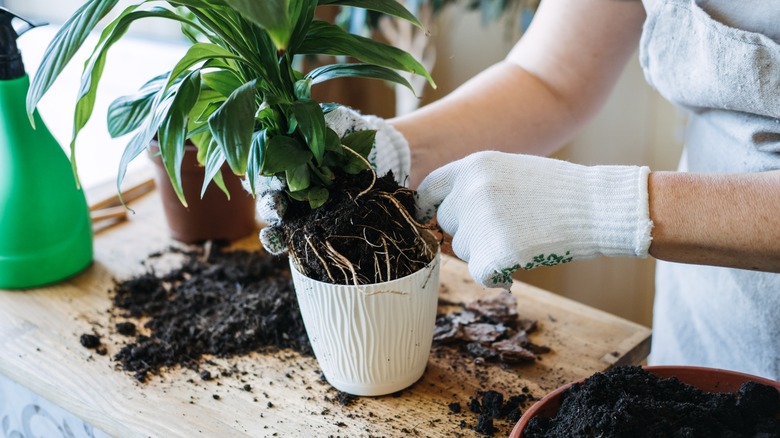Have you ever bought a new houseplant and left it to grow until the plant is completely root-bound, then repotted it and wondered why, months or even years later, the plant just doesn’t seem to want to grow to its full potential? Don’t worry, you’re not alone. It seems that many people make the same mistake when repotting plants. Reagan Kastner, professional celebrity houseplant stylist, describes the same problem she has encountered over and over again with her clients, explaining that it is not enough to simply take the root-bound plant out of its original plant pot, repot it, and then expect the roots to happily spread out on their own and grow into the new, bigger pot.
“This is the most common problem,” says Kastner in a TikTok video, referring to her own experience with clients. “When they previously repotted their plants, they did not break up the root ball. They just took the plant, put it in a new pot, added some new soil. So then when I go to repot it, I find the plant’s rootball is still self-contained, it hasn’t grown out into the new soil at all, and it’s been in that plant pot for years!”
It can be a bit intimidating to repot a root-bound plant though, which is why many people are scared to mess too much with the root ball. It is very easy to damage the delicate roots too much and end up killing a plant. But there are simple ways to repot a root-bound plant properly.
How to repot a rootbound plant properly

Prior to repotting, it can help to water the plant a few days ahead of time, lubricating the roots and making them easier to work with. When carefully removing the plant from the pot, gently squeeze the pot to release the root ball from the sides. Then grip the plant at its base and pull very gently and evenly. If the roots have grown through the drainage holes of the pot, you can snip the ends of the roots off. If your pot is plastic, you can cut the plastic away in pieces using a pair of sharp scissors. Ultimately you want to cause the least damage to the roots.
Once the plant is free from the container, start loosening the root ball. If your plant is tightly root-bound this is going to take some patience, as it can’t be rushed. To do this, gently massage the root ball until it naturally starts to break free from itself. Try not to force the roots apart by pulling, you will only rip or crush them. Some damage is fine and won’t affect the plant’s ability to absorb water and nutrients, but the aim is to preserve as much of the root system as possible. Once you have freed all of the roots from their self-formed prison you can repot your plant as usual, knowing that the roots will be able to grow out in all directions, like they should.
Why is it important to loosen rootbound roots before repotting?

When you have a severely root-bound plant, the roots aren’t capable of growing outwards anymore, despite having plenty of space in the new pot. Reagan Kastner explains the reason for this: “The roots are trapped within themselves, they can’t penetrate their own coil.” This means that the roots have essentially grown so tightly around themselves that any new growth stays contained within, leading to the stunted growth of the plant.
Roots have a number of important functions: If they can’t spread out sufficiently, they can’t provide a growing plant with the anchorage and stability it needs to fully mature. It is also the job of the roots to absorb water and nutrients from the soil and store food that the plant makes through photosynthesis. If the roots can’t spread out properly and grow in order to fulfill this function, the result will be small or curling leaves, leading to less efficient photosynthesis. Soon you will start to see the decline in a root-bound plant that hasn’t been growing well, and the plant will eventually die off.




